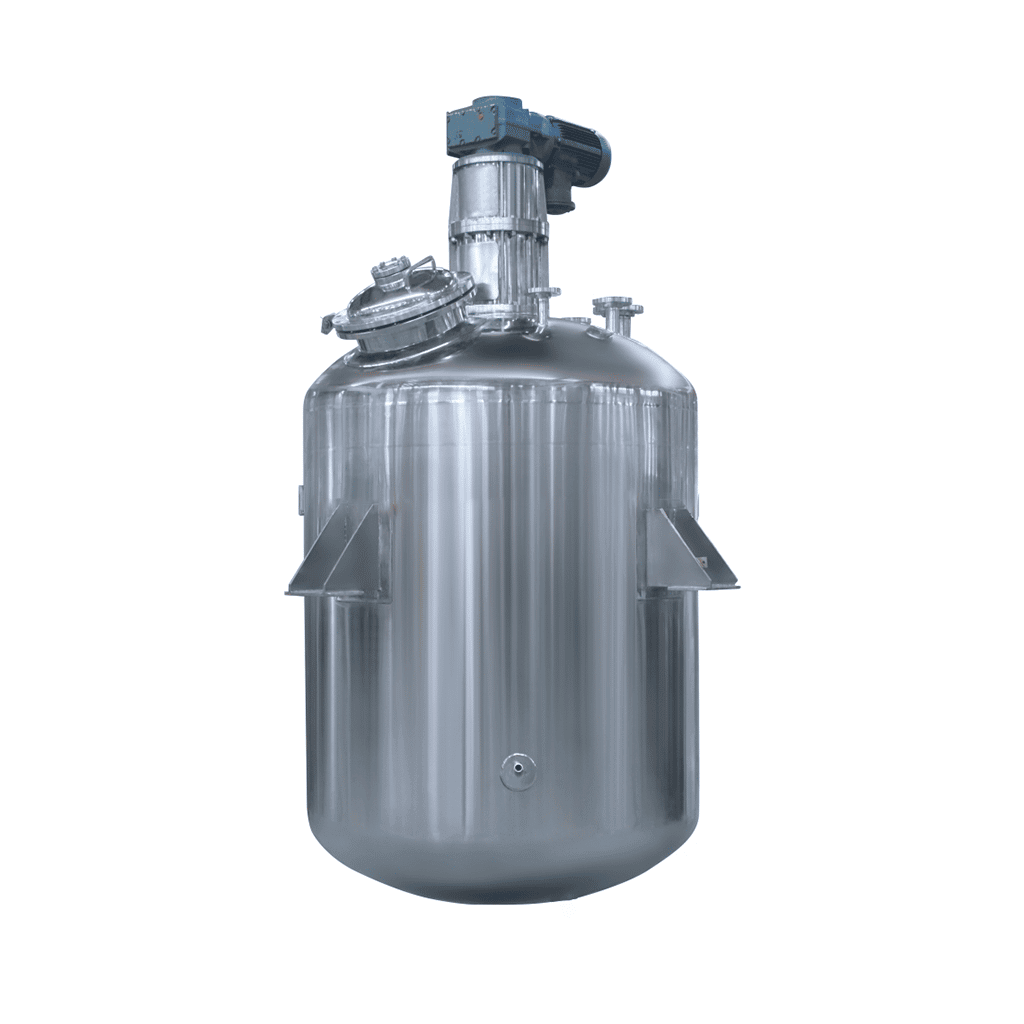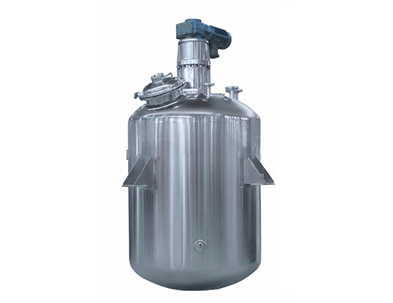
-24-1.jpg)
Stainless Steel Reactor
Stainless Steel Reactor: used in dairy products, sugar, beverages, and other fields
Material
stainless steel (316, 304)
Capacity (L)
10-10000+
Mixing system
anchor, paddle, frame and others
Heating system
electric heating, oil heating and others
A stainless steel reactor is a stainless steel container equipment. The stainless steel reactor consists of a kettle body, a kettle lid, a stirrer, a jacket, a bracket, a transmission device, a shaft seal device, etc. Materials and openings can be made according to user needs and process requirements. Stainless steel reactors are mainly used for stirring, homogenizing, and mixing storage of dairy products, sugar, beverages, food, and various pharmaceuticals.
Request a quoteStainless steel reactors are basic equipment used in the chemical industry. The products they produce either have an impact on the environment or are toxic to the human body. Therefore, in order to avoid safety hazards during use, regular safety inspections of stainless steel reactors are required. Therefore, it is very important to do a good job in the maintenance of stainless steel reactors. Therefore, it is very important for the user to understand the inspection and safety technical operation regulations of stainless steel reactors.

Stainless steel reactor inspection is divided into external inspection, internal inspection, and comprehensive inspection. The periodic inspection of stainless steel reactors is determined based on the technical conditions of use of the equipment. Generally speaking, external inspections are performed at least once a year, internal inspections are performed at least once every 3 years, and comprehensive inspections are performed at least once every 6 years. If the stainless steel reactor has a service life of more than 15 years, internal and external inspections must be conducted every two years. If the service life reaches 20 years, internal and external inspections must be conducted at least once a year.
Preparation work before inspection of the stainless steel reactor
1.Cut off the power supply of the stainless steel reactor. When performing an internal inspection of the stainless steel reactor, a low-voltage explosion-proof lamp with a voltage not exceeding 12v or 24v should be used, and there must be a dedicated person outside the reactor to monitor it. The voltage of inspection instruments and tools should not exceed 36v, and good insulated soft wires and reliable grounding wires should be used.
2.The residual gas in the stainless steel reactor kettle is replaced cleaned, and analyzed to meet safety standards.
3.Open all manholes, remove internal parts, and remove dirt on the inner wall.
4.Clean the materials inside the stainless steel reactor, separate it from other equipment, and mark it clearly.
5.If hot work is involved, fire approval procedures must be completed in accordance with regulations, and the stainless steel reactor area must be equipped with fire protection, safety, and rescue facilities.
Stainless steel reactor inspection steps
External inspection
1.Check whether the anti-corrosion layer, insulation layer, and equipment nameplate of the stainless steel reactor are intact. Whether the safety accessories and control devices are complete, sensitive, and reliable.
2.Check whether there are cracks, deformation, local overheating, etc. on the outer surface of the stainless steel reactor.
3.Check whether there are any leaks in the stainless steel reactor pipe welds and pressure components, whether the fastening bolts are intact, and whether there are any abnormalities such as sinking or tilting of the foundation.
Internal inspection
1.Check whether there is corrosive wear on the stainless steel reactor on the inner surface and manhole nozzle, and whether there are cracks on the welds, head transition areas, or other places where stress is concentrated.
2.When there is corrosion on the internal and external surfaces of the stainless steel reactor, multiple wall thickness measurements should be made at the suspected locations. If the measured wall thickness is less than the designed minimum wall thickness, the strength should be re-evaluated and recommendations on whether it can continue to be used and the maximum allowable working pressure should be made.
3.When the inner wall of the stainless steel reactor has defects such as stress corrosion, intergranular corrosion, fatigue cracks, etc., a comprehensive inspection and surface hardness measurement should be carried out, and an inspection report should be submitted.
Comprehensive inspection
1.Conduct non-destructive inspection on the main welds or body of the stainless steel reactor, and the random inspection length is 20% of the total length of the welds.
2.After passing the internal and external inspection, conduct a water pressure test based on 1.25 times the design pressure of the stainless steel reactor and conduct an air tightness test based on the design pressure of the stainless steel reactor. During the above test process, if the stainless steel reactor and the welds of each part have no leakage, and the stainless steel reactor has no visible abnormal deformation, it is qualified.
Regular inspection of stainless steel reactors is an issue that every enterprise must pay attention to. Small accidents are often caused by people’s negligence. After the inspection is completed, an inspection report will be written based on the inspection result records to indicate whether the stainless steel reactor can continue to be used. For stainless steel reactors that can continue to be used but problems are found, record the treatment results and store the inspection report in the stainless steel reactor technical files for easy reference later.




